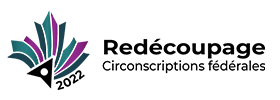Commentaire 396 – commentaires et rétroaction
Les documents ci-dessous sont affichés dans la langue officielle d'origine tels qu'ils ont été reçus.
Retour aux commentaires et rétroaction du public
John Filion
Willowdale Councillor
Thank you for the opportunity to comment on the proposed boundaries.
I will outline some of the problems I see with the current proposal, make some suggestions, and note some legal precedent on preserving communities of interest.
I am here to speak about Willowdale, on which I am somewhat of an expert, having represented it continuously for the past 40 years, including time as a trustee and Chair on the North York Board of Education, a member of North York Council, and then, following amalgamation, Toronto Council. As I retire from politics on Nov. 14 of this year, my comments are not motivated by any personal or partisan political consideration but rather by a concern for the welfare and identity of the community.
Seven Toronto councillors chose not to run for re-election this year, most citing the extreme time demands of representing such large municipal wards. A drop to 24 councillors would exacerbate the problem.
In 2018, the Ontario Government decreed that Toronto's wards must match the Provincial ridings, which match the federal ridings. A single Toronto ward represented by a single politician has more residents than Moncton, Sydney or St. John's. I realize that you neither created this situation, nor do you have the authority to change it, but perhaps there will be a rationale for maintaining Toronto 25 ridings, given the major population increase we can expect due to recent provincial housing policies and a return to high immigration as the pandemic eases.
My main reason for speaking with you, however, is my extreme concern over the way the historic Willowdale community has been virtually eliminated by dividing it at Yonge Street. Even the name is gone – presumably because neither side of Yonge St., on its own, could legitimately be referred to as Willowdale.
Since pioneer days, all facets of Willowdale life have included both sides of Yonge St. And this remains very much true today. Some illustrations of that interconnection:
*Currently, Yonge St. from 401 to Steeles is one of the key Provincial growth areas, where high density development is not only encouraged but required. With the northward expansion of the Yonge St. subway, major redevelopment is underway. A Secondary Plan covers both sides of the street.
*From a residents' perspective, the Yonge Street Corridor Condominium Association represents residents of highrise buildings on both sides of Yonge, while an informal coalition of neighbourhood associations does likewise for those living in the houses immediately to the east and west of the redevelopment area.
*Recently, City Council recognized the unifying nature of Yonge by voting to remove lanes of traffic to create a more pedestrian-friendly area with a main street character.
*From a business point of view, restaurants, stores and offices on both sides of Yonge are represented by a single BIA, the Willowdale Business Improvement Area.
*Arts and Culture is supported by a cluster of facilities on both sides of Yonge: Mel Lastman Square, North York Civic Centre, Meridian Arts Centre, Lee Lifeson Art Park, North York Central Library, Gibson House, the Pioneer Cemetery and three schools for the arts.
*The Willowdale Interfaith Coalition, a multi-denominational group of local religious congregations from both sides of Yonge, comes together on such issues as assisting the homeless or commemorating the victims of the Yonge St. van attack.
All of these groups, some of which are making their own deputations, currently deal with a single Member of Parliament, federally and provincially and a single Toronto Councillor. The proposed boundaries would create two of each, not only forcing these groups to double their political interactions but requiring them to deal with the high potential for dysfunction when two political representatives from the same jurisdiction can't agree on a position.
One of the goals on this exercise should be to provide effective representation. Dividing the riding at Yonge achieves the opposite.
The proposed boundaries also group the neighbourhoods on either sides of Yonge with those further to the east and west, with which they have little in common.
So what boundaries would I suggest?
I would start by preserving the area with the greatest cohesion and strongest community of interest: 401 to Finch, Senlac to Willowdale. I would add to that the adjoining parts of existing neighbourhoods from Senlac to the Don Valley on both sides of Sheppard, so that these pockets are not orphaned.
If more population is needed for parity, I would extend the boundary northward along Yonge between Willowdale Ave. and Hilda Ave., more or less matching the area of the recently-adopted Yonge North Secondary Plan.
If I can be of any assistance with further input after I leave office on Nov. 14, 2022, I would be pleased to do so.
In closing, I will refer to a Supreme Court decision on political boundaries (The Carter Case, 1991) – which I'm sure you are familiar with - which speaks to the importance of recognizing "communities of interest" and "effective representation" while achieving voting parity.
In the decision, Madam Justice Beverly McLauchlin stated that "the purpose of the right to vote" enshrined in the Canadian Charter of Rights and Freedoms "is not voting power per se but the right to 'effective representation.'"
An important component of effective representation, the Court found, is the need to identify and protect communities of interest where this is possible. In Willowdale, this requires not splitting Willowdale in half at Yonge St. and instead preserving the substantial and objectively identifiable Willowdale community which both historically and currently encompasses both sides of Yonge.
Thank you.
